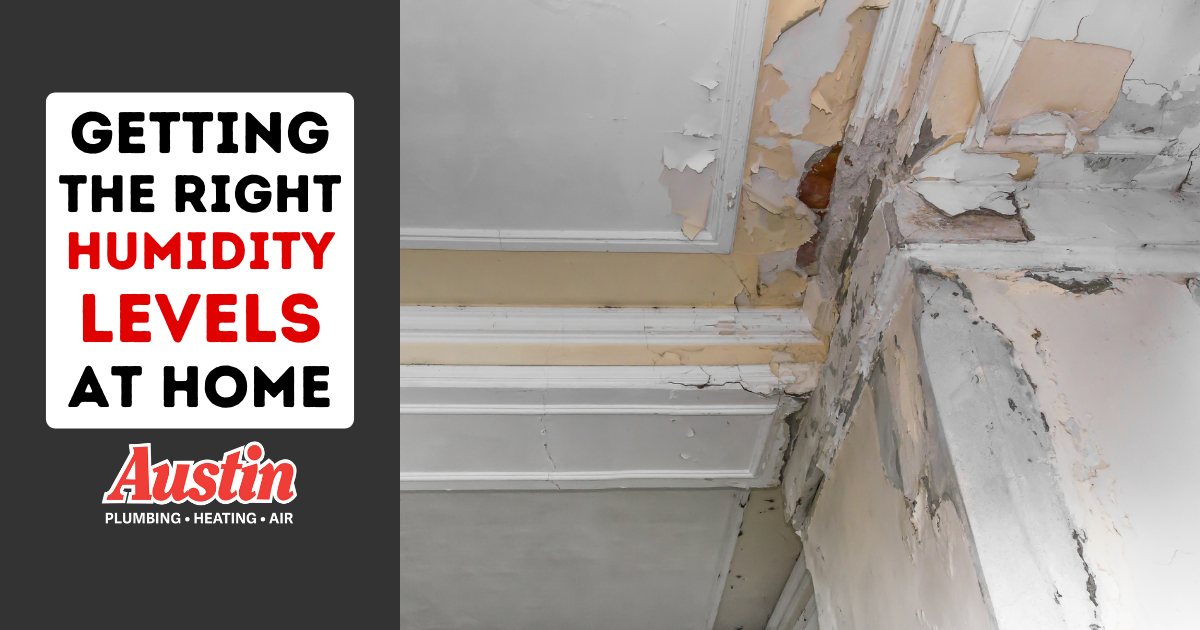What is the ideal humidity level in a home?

Achieving the Ideal Home Humidity Level and Mastering Humidifier Usage
Understanding the importance of maintaining the ideal home humidity level and implementing effective strategies to control it is essential for a comfortable living environment. The recommended range for home humidity is typically between 40% and 60%. This range strikes a balance between comfort and preventing issues such as mold growth, dust mites, and dry skin.
Why is Humidity Important?
Humidity, essentially the amount of water vapor present in the air, significantly impacts our overall well-being and the well-being of our homes.
Comfort:
Humidity levels play a pivotal role in how we perceive temperature. Higher humidity can make the air feel hotter because it dampers the evaporation of sweat from our skin.
Health:
Humidity levels have some influence on health effects. For example, high humidity can foster mold and mildew growth, which often cause issues for people with allergies and asthma. Conversely, low humidity levels can cause dry skin, a sore throat, and nasal congestion.
Home:
Homes are not immune to the effects of humidity. High humidity can damage wood furniture and flooring while causing condensation on windows and walls. On the other hand, low humidity can cause wood to crack and split.
Wisconsin’s Climate and Home Humidity
Living in Wisconsin, the climate presents unique challenges regarding maintaining the ideal home humidity level. The state experiences a temperate climate, with cold winters and warm summers. During the winter, cold air outside combined with heating systems indoors can lead to dry indoor air. The need for indoor heating can strip the air of moisture, causing discomfort such as dry skin, throat irritation, and static electricity.
Alternately, Wisconsin summers can bring high humidity levels, particularly during stormy or hot days. High humidity can make the air feel much warmer than it actually is, making efficient cooling essential. Excessive humidity can also lead to potential issues like mold growth and an uncomfortable living space.
How to Lower Humidity Levels in Wisconsin
Maintaining an optimal humidity level requires a combination of several measures.
Use a Dehumidifier
Most Wisconsin homes need a dehumidifier to balance humidity in their basements, especially during humid summers. A dehumidifier proves to be effective in removing excess moisture from the air and works by drawing in the moist air, passing it over refrigerated coils, and condensing the moisture into water. Dehumidifiers are a great solution for portable dehumidification and are also available in whole home solutions.
Utilize Your Air Conditioner
This is a great solution for reducing humidity in your whole home during the summer months only. Air conditioners, in addition to cooling the air, also play a role in removing excess moisture. In fact, dehumidifying the air is a byproduct of the air conditioning process. Modern air conditioner and heat pumps (side discharge inverter AC’s) are designed to provide enhanced dehumidification!
HRV and ERV Home Ventilation
In Wisconsin, mechanical ventilation is sometimes required to address both the exchange of stale air for fresh air while also at the same time regulating humidity. The most common ventilation system used in Wisconsin is the heat recovery ventilator also known as a HRV. Mechanical ventilation isn’t always necessary. Good ventilation, as long as the temperatures outside allow, can be accomplished by cross-ventilation by opening windows.
Bath Fans & Range Hoods
There is a considerable amount of moisture added to the air from our simple day to day use of our plumbing system in our homes. Humidity is added to the air through showering, cooling, cleaning, running the dishwasher and doing laundry. One way to control excess humidity is to make sure you have the bath fans running during showers and the range hood on while cooking and boiling water.
How to Measure Humidity Levels
To maintain an optimal humidity level, it’s essential to monitor it regularly using a hygrometer. A hygrometer is a simple and inexpensive device that measures humidity in the air. Place it in a central location in your home and check it regularly to ensure you’re within the desired humidity range. Many modern HVAC thermostats and smart thermostats do a great job of monitoring humidity levels in the home.
How to Add Humidity to Your Home
Set Your Thermostat
Adjust your thermostat to the appropriate temperature for the season. During colder months, slightly higher humidity levels can make the air feel warmer, allowing you to lower your thermostat.
Get a Whole Home Humidifier
Many homes in our market get way too dry in the winter, which is why they need to add extra moisture to the air to get to the desired humidity levels. The best way to accomplish that is by adding a whole home humidifier.
Monitor and Adjust
The weather changes quite a bit in Wisconsin, so humidity levels should be adjusted accordingly. We often want to dehumidify our homes in the summer and make them more humidified in the winter. To ensure you don’t end up with the negative effects of too much or not enough humidity, be sure to monitor the humidity levels and adjust accordingly.
Types of Humidifiers
Humidifiers are valuable tools for adjusting humidity levels indoors. There are several types to choose from, each with its own set of advantages.
Whole Home Humidifiers
Whole home humidifiers come in many different types and styles but they all have one thing in common. They mount on the ductwork by the furnace and add humidity to the entire home. This is the preferred method for adding humidity to a home in Wisconsin.
Whole Home Dehumidifiers
Some homes have issues with excess humidity in the winter. It can get so bad that water runs down the inside of windows and ruins woodwork and the windows. While many of these issues are problems with the windows themselves or excess humidity in just one room, we do encounter homes that need less moisture in the winter. For these situations a duct mounted whole home dehumidifier is a good choice.
Portable Humidifiers
As the name implies, these portable humidifiers are a great solution to add humidity to small spaces on an as needed basis and are the best solution for homes without a central HVAC system.
Choosing the ideal humidity level for you
Now that we have covered how to measure the humidity and what equipment you should have in order to adjust the humidity up and down, let’s get down to it- what should you set the desired humidity level at?
We have found that the ideal humidity level for Wisconsin homes during the winter is between 40% and 50%.
Adjust the humidity level up or down from there based on your personal preferences.
Signs the humidity level is too high
- Excess moisture on the windows (although this could also be because of issues with your windows)
- Damp or musty smells throughout the house
- Mold and mildew appearing on walls, ductwork and other surfaces
Signs the humidity level is set too low
- Splitting and cracking of hardwood floors and other woodwork
- Lots of extra static electricity in the home
- Dry nose
- Noticing gaps in wood tables and other furniture
The Best Choice for Humidifier Solutions: Austin Plumbing, Heating & Air
Navigating the realm of humidifiers and efficiently managing home humidity level demands expert guidance and technical knowledge. At Austin Plumbing, Heating & Air, our dedicated team of HVAC gurus are well-versed in all aspects of humidifiers, offering comprehensive advice on the best humidifier type for your specific needs and providing reliable installation and maintenance services.
When it comes to selecting the most suitable humidifier for your home in Wisconsin, it’s crucial to consider the seasonal fluctuations in humidity. In the dry winter months, the right humidifier can add essential moisture to the air. In contrast, during the humid summer months, effective dehumidification ensures a comfortable indoor environment.
The team at Austin Plumbing, Heating & Air understands the unique climate challenges of Wisconsin and can recommend humidifier solutions that align with the state’s seasonal changes, ensuring you maintain an ideal home humidity level all year round. To schedule an appointment to have us out to evaluate your home and humidification system, give us a call at 262-367-3808.





